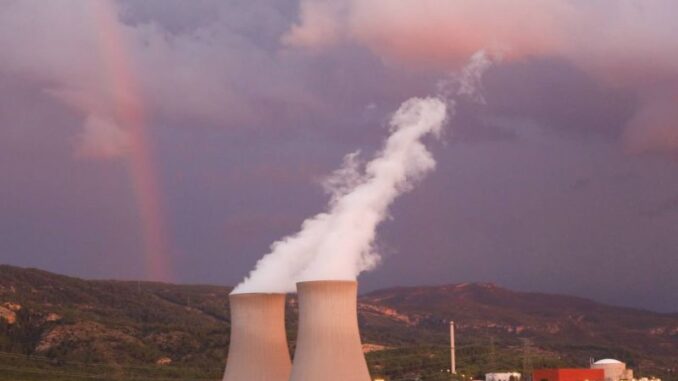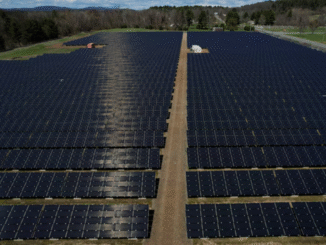
In a dramatic pivot amid growing energy security concerns, Spain’s major utilities—Iberdrola, Endesa, and Naturgy—have united to push for an extension of the country’s largest nuclear power plant, Almaraz. The 2-gigawatt facility in western Spain, which houses two reactors, was slated for initial closure in 2027 as part of the nation’s broader nuclear phaseout plan targeting a full shutdown by 2035.
Now, industry sources reveal that these energy giants are drafting a formal request to the Spanish government for a postponement, potentially stretching operations until 2030 or beyond, with a focus on safety upgrades and technological modernization.
This move signals a potential rethink of Spain’s anti-nuclear stance, driven by recent grid vulnerabilities and the high cost of alternatives.
The Almaraz extension debate couldn’t come at a more precarious time for Spain’s power sector. Just six months ago, on April 28, 2025, the Iberian Peninsula suffered a massive blackout that plunged Spain and Portugal into darkness, affecting millions and exposing cracks in the grid’s resilience.
While initial investigations cleared excess renewable generation as the culprit—pointing instead to a cascading failure in transmission lines—the event has amplified calls for diversified, reliable baseload power.
Spain’s Evolving Energy Mix: Renewables Rise, But Gaps PersistSpain has long been a European leader in clean energy, boasting one of the continent’s most renewable-heavy electricity mixes. In 2024 and early 2025, low-carbon sources dominated, with wind contributing 21% of generation, nuclear at 20%, and solar at 19%.
By September 2025, renewables hit 53.3% of the total mix, led by solar photovoltaics at 23.2%, followed closely by wind.
Over the first half of the year, wind and solar alone met nearly half (46%) of electricity demand, a testament to aggressive deployment of 62 gigawatts of wind and 76 gigawatts of solar capacity.
Yet, this green surge masks underlying challenges. Nuclear power, from seven reactors totaling 7.1 gigawatts, provides stable, dispatchable low-carbon output—accounting for about 20% of electricity in recent years.
Hydropower adds variability at around 10-15%, while fossil fuels, particularly natural gas combined-cycle plants, fill the gaps with roughly 20-25% of the mix.
Coal has dwindled to negligible levels, below 2%, aligning with EU decarbonization goals.
Spain’s National Energy and Climate Plan aims for 81% renewable electricity by 2030, but the phaseout of nuclear—without a clear replacement strategy—threatens to undermine this progress. Critics argue that retiring 20% of reliable capacity will force greater reliance on intermittent renewables and imports, risking supply shortfalls during peak demand.
|
Source
|
Share of Electricity Generation (2025 Avg.)
|
|---|---|
|
Solar PV
|
19-23%
|
|
Wind
|
21%
|
|
Nuclear
|
20%
|
|
Natural Gas
|
19-25%
|
|
Hydropower
|
10-15%
|
|
Other (Biomass, Coal)
|
<5%
|
Table: Approximate Spain Electricity Mix, based on 2024-2025 data.
Post-Blackout Pivot: Natural Gas Surges as a Stopgap
The April blackout, which erased 60% of Spain’s generation in minutes, has had ripple effects far beyond the headlines.
In its aftermath, utilities ramped up natural gas-fired plants to bolster grid stability, particularly for frequency regulation and backup during low-renewable periods. The result? A stark 37% spike in gas demand for electricity production in the first nine months of 2025 compared to the same period in 2024, equivalent to 267.6 terawatt-hours.
This uptick—peaking at 41% in the first half of the year—reflects a deliberate shift toward gas as a “grid service” provider, compensating for the intermittency of solar and wind.
At the time of the blackout, gas was only generating 5% of power (1.6 GW), dwarfed by solar’s 59% share, but post-event deployments have elevated it back toward 19-26% of the mix.
Exports of liquefied natural gas (LNG) have also risen, straining domestic supplies and inflating costs. While gas offers quick-start reliability—unlike the hours-long ramp-up needed for some coal plants elsewhere—this dependency raises alarms. It not only hikes emissions (gas is cleaner than coal but far dirtier than nuclear) but also exposes Spain to volatile global prices, especially as Europe weans off Russian supplies.
Echoes of Germany’s Nuclear Exit: A Cautionary Tale for Madrid
As Spain grapples with its phaseout timetable, eyes are turning northward to Germany, whose abrupt 2023 nuclear shutdown serves as a stark warning. Berlin’s decision to close its last three reactors—framed as an anti-nuclear moral stance post-Fukushima—led to unintended consequences: a surge in coal and gas use, elevated CO2 emissions, skyrocketing electricity prices, and even economic ripple effects.
One year on, Germany’s energy mix is dirtier and costlier, with nuclear’s 6% share replaced largely by lignite, pushing emissions higher than pre-phaseout levels.
Spanish policymakers and industry leaders appear to be heeding these lessons. Post-blackout analyses highlight how nuclear’s inertial stability—its ability to maintain grid frequency without rapid fluctuations—could have mitigated the Iberian cascade.
Phasing out Spain’s reactors gradually from 2027-2035 would blunt emissions impacts compared to Germany’s haste, but opponents warn it still risks “decreased power production, increased fossil reliance, and higher costs.”
As one analyst put it, “Spain’s decision raises substantial challenges for energy security, economic stability, and decarbonization.”
The Almaraz push underscores this growing consensus: nuclear isn’t just legacy infrastructure—it’s a bridge to a net-zero future, especially as battery storage scales up slowly.
A Turning Point for Iberian Energy?
If approved, the Almaraz extension could buy Spain precious time to deploy more renewables and storage while preserving 20% of its clean baseload. Yet, with gas filling immediate voids at a premium, the stakes are high. Will Madrid greenlight this reversal, or double down on a renewables-only gamble? As Europe’s energy transition accelerates, Spain’s choice will ripple across the continent—potentially averting a German-style misstep, or repeating it.
For now, the utilities’ unified front marks a seismic shift. In the words of industry insiders, it’s “about ensuring lights stay on amid fears of a new blackout.”
Watch this space: Spain’s nuclear saga is far from over.
S
Got Questions on investing in oil and gas? Or do you have a Tax Burden in 2025?
Crude Oil, LNG, Jet Fuel price quote
ENB Top News
ENB
Energy Dashboard
ENB Podcast
ENB Substack






Be the first to comment